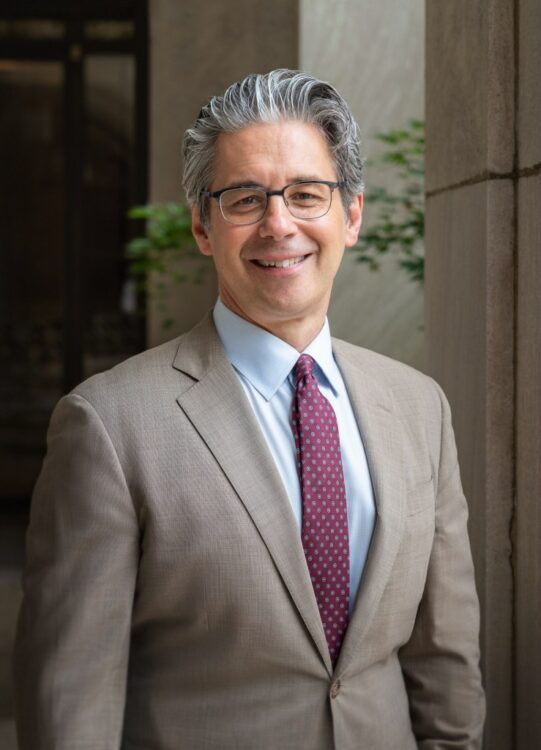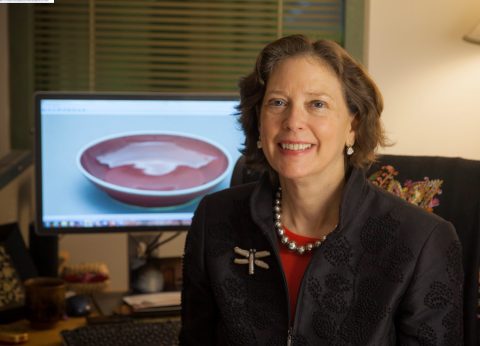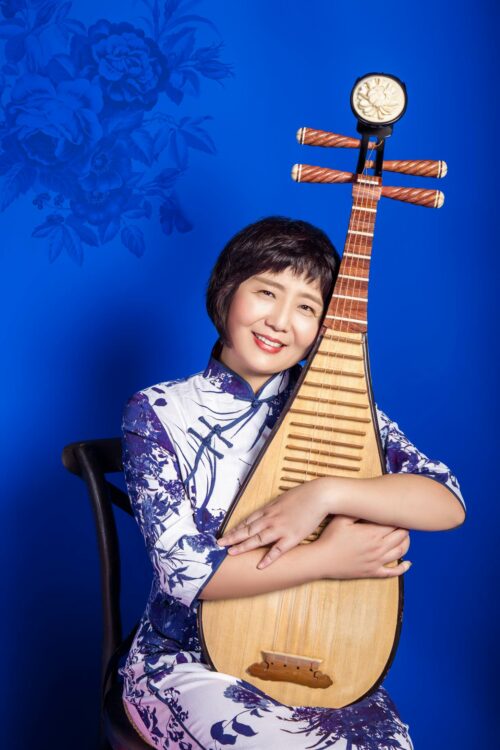On June 16th, we presented “Enhancing Understanding: Chinese Art & Culture in the Museum.” The panelists explored the key role that museums can play today in enhancing public understanding of world cultures and specifically addressed how the Smithsonian’s National Museum of Asian art educates global audiences about Chinese art and culture, building on a history of excellence in scholarship, programming, and international collaboration.
Panelists:
Chase F. Robinson, Dame Jillian Sackler Director of the Arthur M. Sackler Gallery and the Freer Gallery of Art, Smithsonian National Museum of Asian Art

Chase F. Robinson is the Dame Jillian Sackler Director of the Arthur M. Sackler Gallery and the Freer Gallery of Art, which together constitute the Smithsonian’s National Museum of Asian Art. He joined the museum in December 2018. As director, Robinson leads the museum in a five-year strategy that will expand its renowned collections of the arts of East Asia, South Asia, and the Islamic world, celebrate its century-long association with American art, introduce new audiences and technologies, and foster an understanding of the arts, cultures, and societies of Asia.
Robinson came to the Smithsonian from the Graduate Center, the research campus of the City University of New York, where he had served as President (2013–18), as Provost and Senior Vice President (2008–13), and as Distinguished Professor of History. From 1993 to 2008, Robinson was a member of the Faculty of Oriental Studies at the University of Oxford and Fellow of Wolfson College in England. As Professor of Islamic History, Robinson chaired the Faculty Board of the department, which offers degrees in the languages, histories, cultures, and arts of East Asia, South Asia, and the Middle East. Robinson earned his BA degree at Brown University in Providence, Rhode Island, and his MA and PhD degrees in Near Eastern Languages and Civilizations at Harvard University in Cambridge, Massachusetts. His studies also took him to Jerusalem and Cairo.
A scholar of Islamic history and culture, Robinson has been awarded fellowships by the British Academy and Institute for Advanced Study, among others. He has authored or edited nine books and more than forty articles that span the geographical and chronological breadth of the pre- and early modern Middle East. His book Islamic Civilization in Thirty Lives (2016) has been translated into several languages. The Works of al-Ya’qubi (2017) is a coedited, three-volume set of translations of some of the earliest surviving works of history and geography in Arabic. He has served on many boards and editorial committees and is a member of the Council on Foreign Relations.
Jan Stuart, Melvin R. Seiden Curator of Chinese Art, Smithsonian National Museum of Asian Art

Jan Stuart became the first Melvin R. Seiden Curator of Chinese Art in 2014, after serving as Keeper of Asia (department head) at the British Museum from 2006 to 2014. There, in addition to senior management responsibilities and curatorial work, she led the project to create a new gallery for the Sir Percival David collection of Chinese ceramics. Prior to her position at the British Museum, Stuart began her career as a curator at the Freer Gallery of Art and Arthur M. Sackler Gallery, the Smithsonian’s National Museum of Asian Art, after holding a Mellon Fellowship at the Metropolitan Museum of Art and earning undergraduate and graduate degrees from Princeton and Yale Universities in Chinese art, language, and culture.
Her main curatorial focus is on arts from the tenth century forward, with emphasis on ceramics, decorative arts, textiles, and court arts, including paintings. Exhibitions with related publications at the Freer and Sackler include Empresses of China’s Forbidden City, 1644-1912, with Daisy Yiyou Wang, co-organized with the Peabody Essex Museum (Salem) and the Palace Museum (Beijing) in 2018-19. Stuart was awarded the Secretary of the Smithsonian’s Research Prize in 2019 for the catalogue.
Other projects have included new displays of Chinese art for the 2017 renovation of the Freer Gallery, and exhibitions and publications Red: Ming Dynasty/Mark Rothko (2016); Worshiping the Ancestors: Chinese Commemorative Portraits, with Evelyn Rawski (2001); Return of the Buddha: Qingzhou Sculptures (2004); Joined Colors: Decoration and Meaning in Chinese Porcelain, with Louise Cort (1993); and Challenging the Past: The Paintings of Chang Dai-chien, with Fu Shen (1991). Stuart has been active in museum acquisitions and publishes and lectures regularly.
Gao Hong, Master Pipa Performer and Composer

Chinese performer, composer and educator Gao Hong is a master of the pear-shaped lute, the pipa. She began her career as a professional musician at age 12, and later graduated from China’s premier music school, the Central Conservatory of Music in Beijing. In both China and the U.S. Gao has received numerous top awards and honors. In 2005 Gao Hong became the first traditional musician to be awarded the prestigious Bush Artist Fellowship, and in 2019 she became the only musician in any genre to win five McKnight Artist Fellowships for Performing Musicians. As a 2018 Sally Award winner, Gao Hong was honored at the Ordway Center for her commitment to the arts. In 2017 she became the first Chinese musician to play the National Anthem at a Minnesota Timberwolves NBA game at Target Center in Minneapolis. She is also the author of the first pipa method book written in English that was published and distributed worldwide by Hal Leonard.
Gao has performed throughout Europe, Australia, Argentina, Japan, Hong Kong, China, and the U.S. in solo concerts and with symphony orchestras, jazz musicians, and musicians from other cultures. She has performed at many major festivals and venues worldwide. Her performances have included those at the Lincoln Center Festival; Carnegie Hall; the San Francisco Jazz Festival; the Smithsonian Institution; the Next Wave Festival; Festival d’Automne a Paris in Paris and Caen, France; the International Festival of Perth, Australia; and the Festival de Teatro d’Europa in Milan, Italy. Her performances of pipa concerti with symphony orchestras include world premieres with the China National Traditional Orchestra at the National Center for the Performing Arts in Beijing, the Guangdong National Orchestra, Heidelberg Philharmonic, Hawaii Symphony, Women’s Philharmonic, Portland Symphony and Minneapolis Pops; and world premiere recordings with the Boston Modern Orchestra and Moravian Philharmonic. Other regional premieres include those with the St. Paul Chamber Orchestra, Buenos Aires Philharmonic, Louisville Orchestra, Pasadena Symphony, Seattle Creative Orchestra, and many others. In addition, she performed worldwide with the Lincoln Center production of “The Peony Pavilion.”
As a composer, she has received commissions from the American Composers Forum, Walker Art Center, Jerome Foundation, Zeitgeist, Ragamala Music and Dance Theater, Theater Mu, IFTPA, Minneapolis Guitar Quartet, The Cedar, SEMAC, and TPT-PBS. The Sorel Organization in NYC awarded her a Medallion recording grant. Her albums were winners of gold medals from the Global Music Awards.
Gao teaches Chinese Musical Instruments and is Director of the Chinese Music Ensemble and Global Music Ensemble at Carleton College in Minnesota. She is also Guest Professor at the Central Conservatory of Music, China Conservatory of Music, Tianjin Conservatory of Music, and Hebei Vocational Arts College. She is a member of the Board of Directors of the American Composers Forum and Minnesota Citizens for the Arts.
The discussion was held via Zoom webinar on Wednesday, June 16, 2021, at 7pm ET.